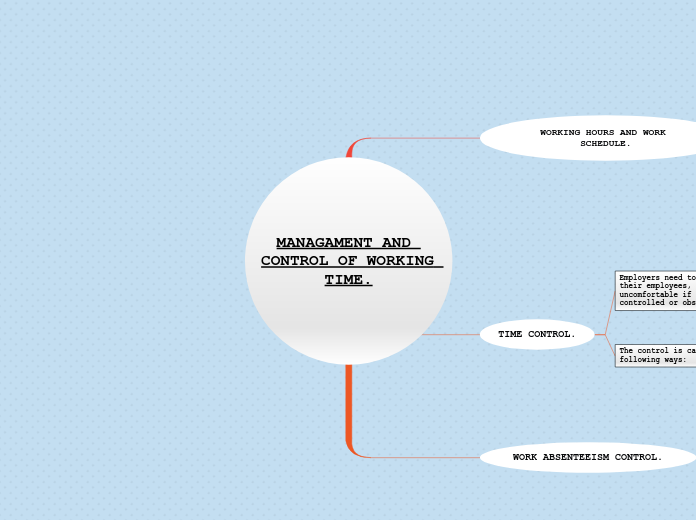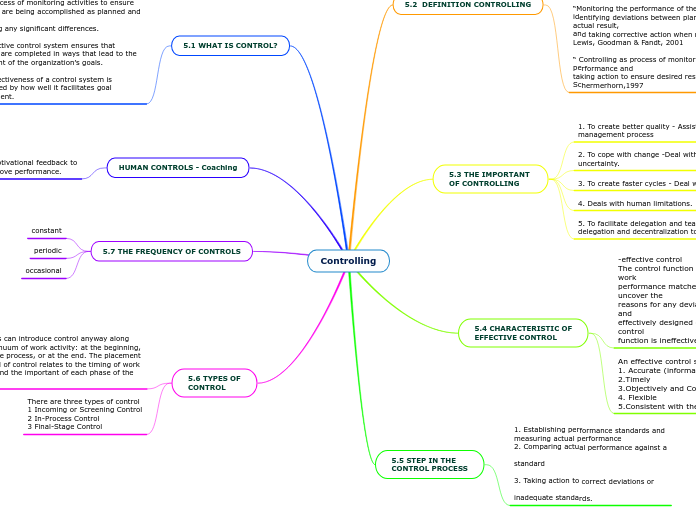MANAGAMENT AND CONTROL OF WORKING TIME.
To name your story, you have to think about the overall message and what you want your audience to understand from the story. Also, make it relevant and easy to remember.
WORK ABSENTEEISM CONTROL.
The ending of a story is essential. We all know that if the ending is weak, what happened before loses its importance. So make it unpredictable, but fair. A resolved ending answers all the questions and ties up any loose threads from the plot.
TEMPORARY INCAPACITY
When the worker can justify a permanent illness or disability on the job.
TYPES OF EXCUSED ABSENCES
This is the closure section of the story.
See examples of possible outcomes below:
- all problems have been solved
- it's clear how each one of your characters ends up
- your main character is transformed by the challenge
Sickness, death of a family member...
Try answering these questions in order for you to come up with a closure:
- Have all problems been solved?
- Is it clear what happens with all your characters in the story?
- Has the challenged transformed your main character?
- How do the characters feel in the end?
TYPES OF ABSENCES:
This is the moment when the main character surpasses the last obstacle and finally faces their greatest challenge.
The climax usually follows one of these patterns:
- realization
- resolution
- choice
Type in your answer.
unexcused absences
excused absences
TIME CONTROL.
The middle of the story is where you add layers of complications that will lead to the end. Reveal more about the character's journey. Did their personality go through changes? How did they overcome the challenges? And as you build up the story’s central conflict, make it more personal to that character. Also, from the middle act, you have to lead into the final act.
The control is carried out in the following ways:
Your character(s) need(s) motivation in order to solve the challenge(s).
With a print or facial scanner.
Secondary characters also might have motivs beacuse of which they may cross path with main character or which might trigger them to help the main character.
Checking in and out with a card (not very safe as a worker may ask another worker to swipe their card in their absence).
Secondary characters might also have motives that lead them to cross paths with the main character or which might trigger them to help the main character.
Signing in and out of a document daily.
Why does your character need to confront this challenge? What does he/she expect to accomplish by solving it?
See a few examples:
- will marry in 3 days
- can fix the mistakes of the past
Employers need to control the time of their employees, although some find it uncomfortable if the worker feels controlled or observed.
Each story has a main character and that character usually needs to solve a problem or challenge. The character's challenge is the one that creates tension throughout the story.
WORKING HOURS AND WORK SCHEDULE.
In the beginning of the story (or the exposition), you will need to introduce the setting and characters. You might also want to introduce the main conflict. This part of the story is important because it gives the reader necessary background information and maybe even a first insight into a character’s personality.
LEAVE
They can get paid leave as long as they are on this list:
-Birth of a child or death (death of a family member).
-Moving.
-One hour a day to breastfeed your child under nine months.
-Public obligations.
-Union or worker representation activities.
Workers must know the days they are entitled to vacation at least two months before these. The calendar is fixed in each company.
REDUCTION OF THE WORKING DAY FOR FAMILY REASONS.
A worker has the right to a reduced workday as long as he or she is in the care of a child under 12 or a person in need.
OVERTIME
A year a worker can only do 80 hours of overtime and at night and for minors are prohibited.
NIGHT WORK AND SHIFT WORK
Night work is regulated by time restrictions. The least of them can't work at night. They are declared as dangerous and unhealthy.
REST TIME
The setting (time & place) of a story can change throughout the plot.
Between a day and another 12 hours of rest, minimum 15 minutes a day and a day and a half a week.
UNDERAGE WORKERS
Minimum daily rest time of 30 minutes and two days per week.
WORK TIME
Characters are essential to a good story. Usually, the protagonist(s) is/are the most affected by the plot. Introduce a character by focusing on their actions, interests, and occupation, as the physical appearance doesn't make a difference in most cases.
40 hours per week, 8 per day .
15 minutes of rest per day and one and a half days per week.
Type in the name of your character.










